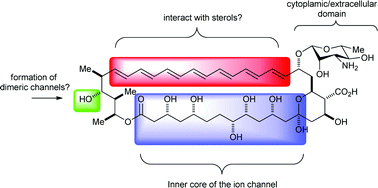Synthesis and biological evaluation of amphotericin B derivatives
Abstract
Covering: 1955 to 2009
The preparation and biological properties of various

* Corresponding authors
a
Laboratorium für Organische Chemie der ETH-Zürich, HCI H 335, Wolfgang Pauli Strasse 10, Zurich, Switzerland
E-mail:
carreira@org.chem.ethz.ch
Fax: +41 44 632 1328
Tel: +41 44 632 2830
Covering: 1955 to 2009
The preparation and biological properties of various

 Please wait while we load your content...
Something went wrong. Try again?
Please wait while we load your content...
Something went wrong. Try again?
A. A. Volmer, A. M. Szpilman and E. M. Carreira, Nat. Prod. Rep., 2010, 27, 1329 DOI: 10.1039/B820743G
To request permission to reproduce material from this article, please go to the Copyright Clearance Center request page.
If you are an author contributing to an RSC publication, you do not need to request permission provided correct acknowledgement is given.
If you are the author of this article, you do not need to request permission to reproduce figures and diagrams provided correct acknowledgement is given. If you want to reproduce the whole article in a third-party publication (excluding your thesis/dissertation for which permission is not required) please go to the Copyright Clearance Center request page.
Read more about how to correctly acknowledge RSC content.
 Fetching data from CrossRef.
Fetching data from CrossRef.
This may take some time to load.
Loading related content
